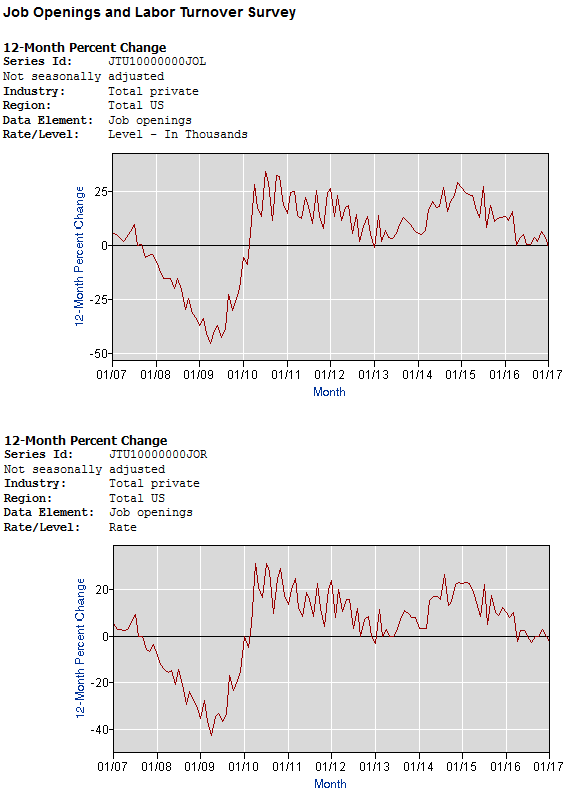The BLS Job Openings and Labor Turnover Survey (JOLTS) can be used as a predictor of future jobs growth, and the predictive elements show that the year-over-year growth rate of unadjusted private non-farm job openings again were again insignificantly changed from last month.

Analyst Opinion of JOLTS Data
It comes as no surprise that JOLTS is continuing to show little year-over-year job openings growth. Historically, this indicates weaker employment growth. Both employment and JOLTS job openings year-over-year growth have been slowing for the past year – and the short term trend is flat. This aligns with Econintersect‘s Employment Indexwhich is forecasting moderate employment gains.
There was no market expectations from Bloomberg / Econoday this month.
last month’s graph:

this month’s graph:

The relevance of JOLTS to future employment is obvious from the graphic below which shows JOLTS Job Openings leading or coincident to private non-farm employment. JOLTS job openings are a good predictor of jobs growth turning points – and have similar trend lines..
The graph below uses year-over year growth comparisons of non-seasonally adjusted non-farm private BLS data versus JOLTS Job Openings – and then compare trend lines.
Year-over-Year Change – Unadjusted Non-Farm Private Jobs Openings from JOLTS (blue line, left axis) compared to Unadjusted BLS Non-farm Private (red line, right axis)












Leave A Comment